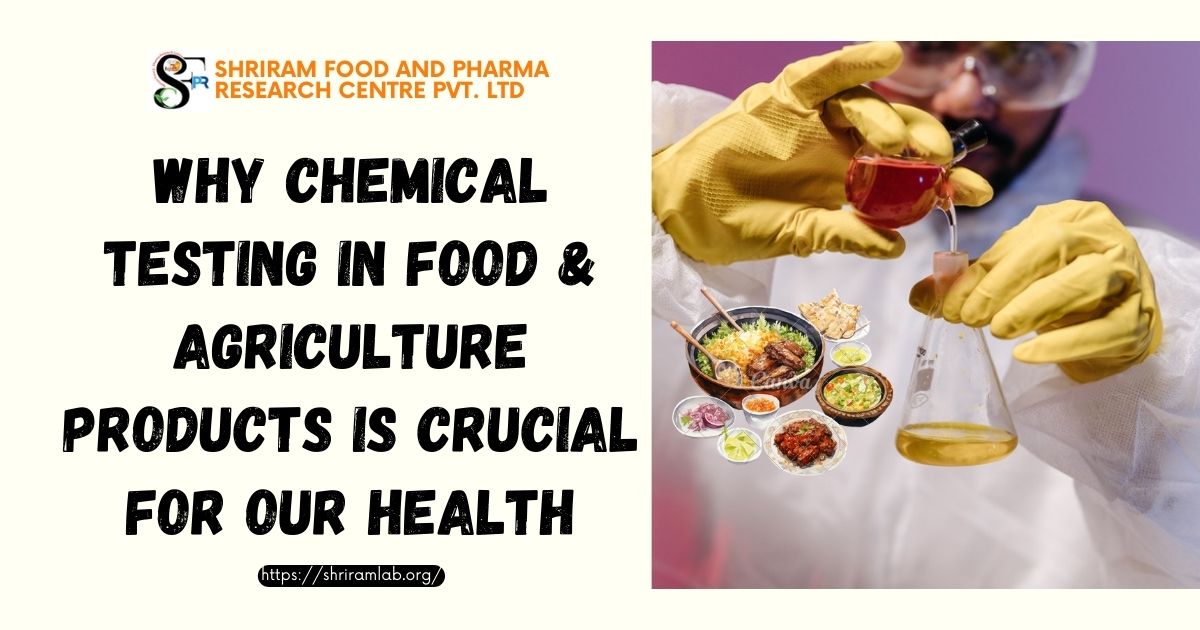Chemical testing in food and agricultural products is vital for safeguarding our health for several reasons:
1. Ensuring Safety:
Chemical testing helps identify harmful substances such as pesticides, heavy metals, and additives that might be present in food and agricultural products. These substances can pose serious health risks if consumed in large quantities or over extended periods.
2. Preventing Contamination:
Agricultural products can be contaminated at various stages of production, processing, and distribution. Chemical testing helps detect contamination by pathogens such as bacteria, viruses, and fungi, as well as environmental pollutants like industrial chemicals and toxins.
3. Compliance with Regulations:
Governments and international organizations have established regulations and standards for food safety. Chemical testing ensures that food and agricultural products meet these regulatory requirements, protecting consumers from potential health hazards.
4. Quality Control:
Chemical testing is essential for maintaining the quality and integrity of food and agricultural products. It helps ensure that products are free from defects, spoilage, and adulteration, thereby maintaining consumer confidence and trust.
5. Allergen Detection:
Many people suffer from food allergies or intolerances. Chemical testing helps identify allergens such as gluten, nuts, dairy, and shellfish, enabling consumers to make informed choices and avoid potential allergic reactions.
6. Monitoring Residues:
Chemicals used in agriculture, such as pesticides and fertilizers, can leave residues on crops and in animal products. Chemical testing allows for the monitoring of these residues to ensure they are within safe limits and do not pose a risk to human health.
7. Traceability:
Chemical testing plays a crucial role in traceability systems, which track the movement of food and agricultural products from farm to fork. It helps identify the source of any contamination or quality issues, facilitating rapid response and containment measures.
Chemical testing in food and agricultural products is an essential process that ensures the safety and quality of the food we consume. It involves analyzing food items for the presence of chemical substances that could be harmful to health, such as pesticides, heavy metals, and additives.
Here’s a detailed explanation of the process:
1. Sampling
The first step in chemical testing is collecting samples from various batches of food or agricultural products. These samples should be representative of the entire batch and handled with care to avoid contamination.
2. Preparation
Samples are then prepared for analysis. This may involve grinding, homogenizing, or treating the samples with chemicals to extract the substances of interest.
3. Analysis
The prepared samples are analyzed using various techniques and equipment. Common methods include:
- High-Performance Liquid Chromatography (HPLC): Used to separate, identify, and quantify components in the sample.
- Gas Chromatography-Mass Spectrometry (GC/MS): Ideal for volatile and semi-volatile compounds.
- Inductively Coupled Plasma Mass Spectrometry (ICP-MS): Used for detecting metals at very low concentrations.
4. Detection of Contaminants
The analysis aims to detect any chemical contaminants present in the sample. These could include:
- Pesticides: Chemicals used in agriculture to protect crops from pests.
- Heavy Metals: Such as lead, mercury, and cadmium, which can be toxic.
- Food Additives: Like preservatives, colorants, and flavor enhancers.
5. Quantification
If contaminants are detected, their concentration is measured to determine if they are within the safe limits set by regulatory bodies.
6. Interpretation
The results are interpreted by experts to assess the risk posed by any contaminants found. This involves comparing the levels detected with known safety thresholds.
7. Reporting
A detailed report is prepared, outlining the findings of the tests. This report is crucial for food producers, regulators, and consumers, as it informs decisions about the safety of the food product.
8. Regulatory Compliance
Producers use these reports to ensure their products comply with local and international food safety standards. Non-compliance can lead to product recalls, legal action, and damage to brand reputation.
9. Quality Assurance
Regular chemical testing is part of a broader quality assurance program that helps maintain the integrity of the food supply chain and protects public health.
Laboratories conducting these tests ensure they meet the highest standards of testing accuracy and reliability.
In summary, chemical testing plays a pivotal role in the food industry, assuring that the products are safe for consumption and free from harmful levels of chemical contaminants. It’s a complex process that requires specialized equipment and expertise but is essential for maintaining the safety and quality of our food.
“Ensure the safety and excellence of your products with Shriram Food and Pharma Research Centre – your trusted partner in food quality control testing. Contact us today to safeguard your brand’s integrity!”





